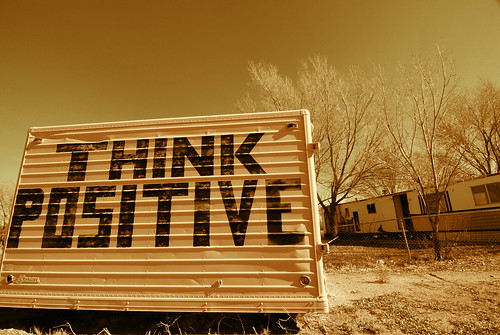Dear all,
As you know Nelson Mandela died on Friday. A great statesmen of our time, who achieved so much in his life time, and hence as an admin we have decided that at homeroom on Monday we would like you to spend 10-15 minutes recognizing the importance of his life, and discussing his achievements with your homeroom class. I have provided this link to a simple 5 minute video that covers his life and some of his achievements as an international statesman. I would advise downloading to your computer before homeroom so you don’t have any streaming issues. Of course, there are other videos that you can use and may be better for different age groups.
“A good head and a good heart
are always a formidable combination”
”Education is
the most powerful weapon which you can use to change the world.”
“The greatest
glory in living lies not in never failing, but in rising when we fail."
“It always seems impossible until it’s done.”
Food for Thought.
This week I have returned to
focusing on a welcoming and positive environment in our classrooms. I do feel
that around the classrooms and corridors there is a very positive buzz from our
students and do not see this as an area of weakness. However, as Dylan William
pointed out that as teachers we always want to do better. So as we reach the
end of Semester One it is an ideal opportunity to reflect on ourselves and the
environment that we create as teachers. Hence this short checklist style
article provides a framework for you to read each point and think about how you
approach it whilst creating that welcoming and positive environment in which
students can flourish and feel safe in their learning.

Wavy1 via Compfight cc

Wavy1 via Compfight cc
How to Create A Non-Threatening, Welcome Classroom Environment
By Sue Watson
Non-Threatening Welcoming Classroom Environment Checklist.- Do you greet your students
each day with enthusiasm and find something positive to say as much as
possible or as much as time will allow for?
- Do you provide students with
time to share happenings, events or items with you? Even if you set a
certain time frame aside each day for 3-5 students to share, it will help
to create a friendly warm, and welcome environment. It shows them you care
and it provides you with opportunities to learn about what is important
about each of your students.
- Do you take the time on
occasion to share something that is important to you? Even if it's the
fact that your own child took their first steps or if you saw a wonderful
play that you would like to share with your students. Your students will
see you as a real and caring person. This type of sharing shouldn't be
done every day but from time to time.
- Do you take time to talk
about differences within the classroom? Diversity is everywhere and
children can benefit from learning about diversity at a very early age.
Talk about varying cultural backgrounds, body image and types, talents,
strengths and weaknesses. Provide opportunities for your learners to share
their strengths and weaknesses. The child who may not be able to run fast
may be able to draw very well. These conversations always need to be held
in a positive light. Understanding diversity is a lifelong skill children
will always benefit from. It builds trust and acceptance in the classroom.
- Do you say no to all forms of bullying? There is no such thing as a welcoming, nurturing environment when there is tolerance for bullying. Stop it early and make sure all students know that they should report bullying. Remind them that telling on a bully is not tattling, it is reporting. Have a set of routines and rules that prevent bullying.
- Do you build activities into
your day that support students working together and building rapport with
one another? Small group work and team work with well-established routines
and rules will help in developing a very cohesive environment.
- Do you focus on the
strengths when calling upon a student? Never put down a child for not
being able to do something, take someone to one time to support the child.
When asking a child to demonstrate or respond to something, be sure that
the child is in the comfort zone, always capitalize on the strengths.
Showing sensitivity to each of your students is extremely important in
protecting their confidence and self-esteem.
- Do you promote two way
respect? I can't say enough about two way respect. Adhere to the golden
rule, always show respect and you will get it back in return.
- Do you take time to educate
the class about specific disorders and disabilities? Role play helps to
develop empathy and support among classmates and peers.
- Do you make a conscientious effort to promote confidence and self-esteem among every student in the classroom? Give praise and positive reinforcement that is real and deserved often. The more that students feel good about themselves, the better they will be toward themselves and others.
Many of the strategies listed above
come from seasoned educators who have shared what they believe it takes to create
a warm and welcome environment that is conducive to learning and maximizing
student social and academic growth. If you have answered yes to the items
listed here, you already know you have a great environment for your students.
Transforming our
Classrooms #4
Remix
- The
"Imbecile" and "Moron" Responds: On the Freedoms of
Remix Creators
- Dr.
Mashup; or, Why Educators Should Learn to Stop Worrying and Love the Remix
- Remix Defined
- Everything
is a Remix: Learning 2.0 Edition (Rebekah Madrid's resources)
- Everything is a Remix
Project Examples:
- They Made it Their Own: Classroom Remix Examples from
Chicago Middle School Students
- Classroom Remix Examples from Rebekah Madrid's
Learning 2.0 resources
Thank you for all your
patience and hard work this first semester. I know a lot of you smiled inwardly
at the start of the year when I announced our goal, as part of a Culture of Achievement,
is to be the “Best in the Universe,” and whispered, he has to be joking. Having
worked with you all, and watched you work with each other for nearly 5 months
and witnessed the growth of a learning buzz around the school, I am more
convinced than ever that we can achieve this goal and be the best.
Hope to see you this evening,
Yours
Adrian



What account is this using?
ReplyDelete